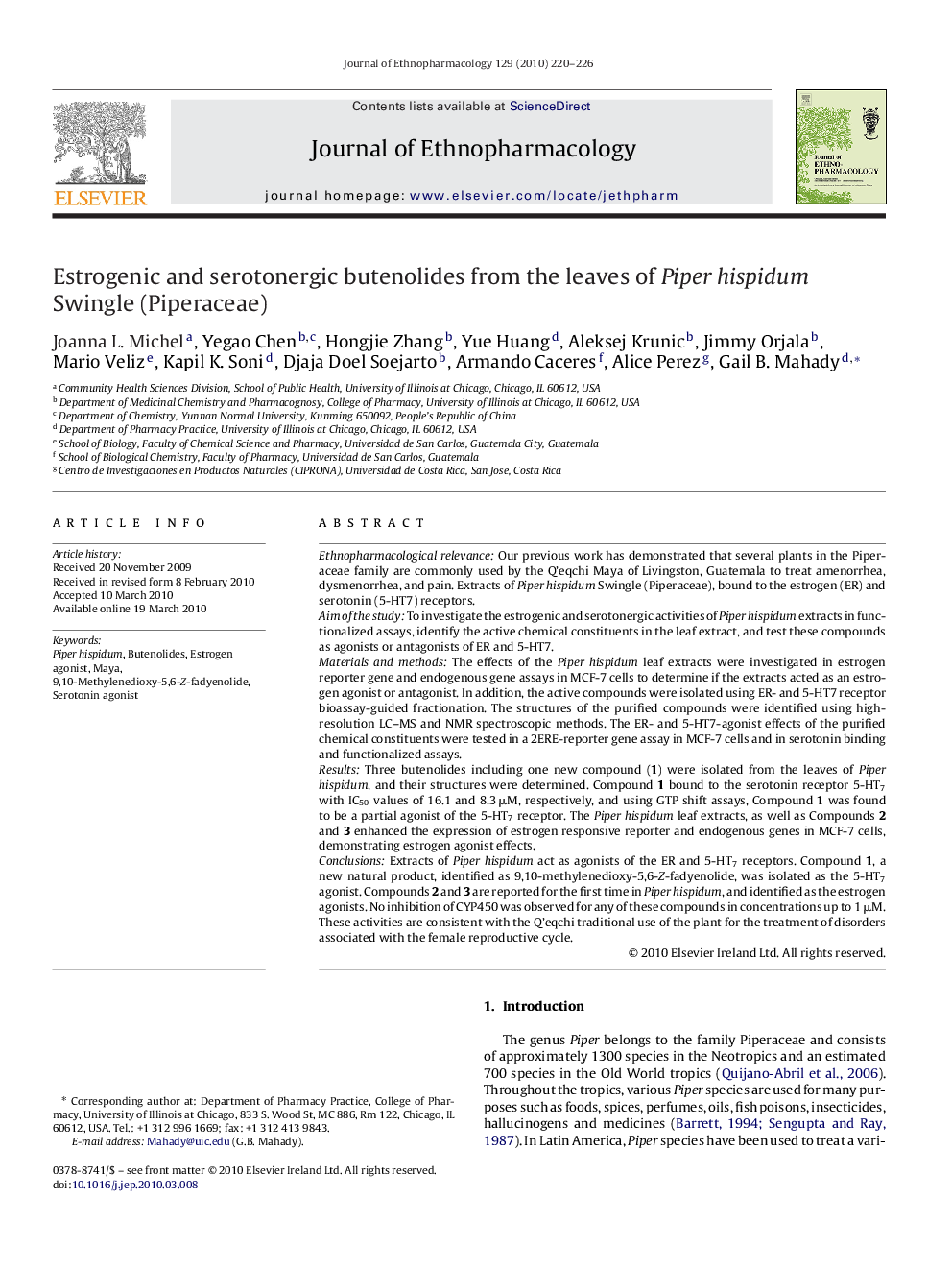| Article ID | Journal | Published Year | Pages | File Type |
|---|---|---|---|---|
| 2546282 | Journal of Ethnopharmacology | 2010 | 7 Pages |
Ethnopharmacological relevanceOur previous work has demonstrated that several plants in the Piperaceae family are commonly used by the Q’eqchi Maya of Livingston, Guatemala to treat amenorrhea, dysmenorrhea, and pain. Extracts of Piper hispidum Swingle (Piperaceae), bound to the estrogen (ER) and serotonin (5-HT7) receptors.Aim of the studyTo investigate the estrogenic and serotonergic activities of Piper hispidum extracts in functionalized assays, identify the active chemical constituents in the leaf extract, and test these compounds as agonists or antagonists of ER and 5-HT7.Materials and methodsThe effects of the Piper hispidum leaf extracts were investigated in estrogen reporter gene and endogenous gene assays in MCF-7 cells to determine if the extracts acted as an estrogen agonist or antagonist. In addition, the active compounds were isolated using ER- and 5-HT7 receptor bioassay-guided fractionation. The structures of the purified compounds were identified using high-resolution LC–MS and NMR spectroscopic methods. The ER- and 5-HT7-agonist effects of the purified chemical constituents were tested in a 2ERE-reporter gene assay in MCF-7 cells and in serotonin binding and functionalized assays.ResultsThree butenolides including one new compound (1) were isolated from the leaves of Piper hispidum, and their structures were determined. Compound 1 bound to the serotonin receptor 5-HT7 with IC50 values of 16.1 and 8.3 μM, respectively, and using GTP shift assays, Compound 1 was found to be a partial agonist of the 5-HT7 receptor. The Piper hispidum leaf extracts, as well as Compounds 2 and 3 enhanced the expression of estrogen responsive reporter and endogenous genes in MCF-7 cells, demonstrating estrogen agonist effects.ConclusionsExtracts of Piper hispidum act as agonists of the ER and 5-HT7 receptors. Compound 1, a new natural product, identified as 9,10-methylenedioxy-5,6-Z-fadyenolide, was isolated as the 5-HT7 agonist. Compounds 2 and 3 are reported for the first time in Piper hispidum, and identified as the estrogen agonists. No inhibition of CYP450 was observed for any of these compounds in concentrations up to 1 μM. These activities are consistent with the Q’eqchi traditional use of the plant for the treatment of disorders associated with the female reproductive cycle.
Graphical abstractOne new (Compound 1) and two known (Compounds 2 and 3) butenolides were isolated from the leaves of Piper hispidum, a traditional medicine of the Q’eqchi Maya of Livingston, Guatemala. Compound 1 acts as a serotonin agonist in 5-HT7 receptors (IC50 of 14.0 ng/ml; Ki: 8.48 ng/ml). Compounds 2 and 3 (1 μg/ml) enhanced the expression of a 2ERE-reporter gene construct in MCF-7 cells.Figure optionsDownload full-size imageDownload as PowerPoint slide
